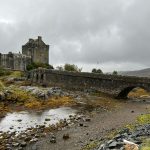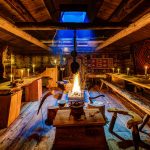Dorset, famed for its rugged coastline and dramatic landscapes, has long been a magnet for photographers. The region’s diverse terrain, from the historic ruins of Corfe Castle to the pure white cliffs and rolling sea, offers an abundance of opportunities to capture the perfect shot. But what are the best techniques to achieve stunning coastal images? Here, we delve into the world of photography to explore just that.
Understand the Power of Light
Light is an integral part of photography. It’s the difference between a flat, uninspiring image and a dynamic, evocative photograph that tells a story. To truly understand light, you need to observe it and see how it changes throughout the day. The best moments to capture breathtaking coastal photos are often during the golden hours – the first hour of light after sunrise and the last hour before sunset. The sky is bathed in a warm, golden glow, adding depth and texture to your photos.
A lire en complément : What are the best spots for a guided botanical drawing class in the UK?
When shooting in Dorset, keep an eye on the weather too. Stormy skies can produce some of the most atmospheric photos. The sudden shift in light can illuminate Dorset’s landscapes in dramatic and unexpected ways, transforming a familiar view into something entirely new.
Master Your Camera Settings
Being able to manipulate your camera settings is essential in photography. Understanding how aperture, shutter speed, and ISO work together will allow you to control the exposure and depth of field of your images, bringing your vision to life.
A lire en complément : How can you experience traditional sheep herding demonstrations in the Scottish Borders?
For landscape photography, a small aperture (large f-number) is usually best as it provides a greater depth of field, ensuring everything from the foreground to the background is in focus. Slowing down the shutter speed can also create interesting effects, especially when photographing the sea. A slower shutter speed will blur the movement of the waves, resulting in a silky, ethereal effect.
When shooting in Dorset, be prepared to adjust your settings based on the conditions. Bright, sunny days will require different settings compared to overcast or stormy ones.
Select the Right Lens
The lens you choose can drastically impact your images. A wide-angle lens is often the go-to for landscape photographers. It allows you to capture a broad view of the scenery, creating a sense of spaciousness and grandeur.
When photographing Dorset’s coastal landscapes, a wide-angle lens can capture the vast expanse of the sea or the imposing presence of Corfe Castle. However, don’t be afraid to experiment with other lenses. A telephoto lens, for instance, can help you bring distant objects closer, offering a different perspective.
Utilize Filters
Filters can be a game-changer in landscape photography. They can control reflections, enhance colors, darken the sky, or smooth out water. For coastal photography, one of the most important filters is a polarizing filter. This can enhance the blues of the sky and the sea, and reduce reflections from water and wet rocks.
Neutral density filters are another essential tool for shooting seascapes. They reduce the amount of light entering the camera, allowing you to use slower shutter speeds without overexposing your photos. This is particularly useful when you want to blur the movement of the waves or clouds.
Scout Your Location and Time Your Shoot
Scouting your location beforehand can greatly enhance your photos. It allows you to plan your compositions, anticipate the light, and study the tides.
Dorset has a plethora of stunning locations perfect for coastal photography. Corfe Castle, perched on a hill, offers a unique vantage point over the surrounding landscape, while the rugged cliffs and sea stacks of the Jurassic Coast are sure to inspire awe.
Timing is also crucial. While sunrise and sunset usually offer the best light, don’t disregard the midday sun or the blue hour after sunset. Each brings a different character to the landscape. Keep an eye on the tide times too, as they can dramatically alter the landscape, revealing or hiding features in your chosen location.
As you can see, there’s no singular answer to what makes a stunning coastal photograph. Instead, it’s a combination of understanding light, mastering your camera, choosing the right lens, utilizing filters, and selecting the best location and time. But above all, it’s about observing the world around you and capturing what moves you. The rest, as they say, is up to the click of the shutter.
Experiment with Black and White Photography
Transitioning your coastal images to black and white can create a dramatic effect, showcasing the stunning Dorset landscapes in a unique light. This technique, often overlooked by beginners, can add a timeless quality to your photos, highlighting the textures and contrasts inherent in coastal landscapes.
When shooting with the intention of converting to black and white, consider the interaction between light and shadow. Look for strong lines and contrasts that will stand out in monochrome. Pay special attention to weather conditions – cloud patterns, mist, or rain can all enhance the drama in black and white photography.
In terms of camera settings, shooting in RAW will give you the most flexibility in post-production. This will allow you to adjust the contrast, shadows, highlights, and tones to achieve the desired effect. Remember, shutter speed will continue to be crucial in capturing the movement of the sea or clouds.
Prominent locations in Dorset, such as Corfe Castle, Durdle Door, and Old Harry Rocks, can be particularly striking in black and white. For example, capturing the rough textures and stark silhouette of Corfe Castle against a moody sky, or the fabled limestone arch of Durdle Door juxtaposed against turbulent waves, can result in compelling monochrome images.
Explore Different Vantage Points
The beauty of landscape photography is that it allows you to view familiar scenes from fresh perspectives. When photographing in Dorset, don’t restrict yourself to the classic viewpoints. Exploring different angles and elevations can dramatically change the composition of your photograph, adding depth and interest to your shots.
Consider hiking up to the top of a hill for a panoramic view of the coast or getting down low to emphasize foreground elements. For instance, the view from the car park at the top of Kimmeridge Bay offers a breathtaking panorama of the Jurassic Coast, while a lower perspective at Old Harry Rocks can draw attention to the interesting rock formations and tidal pools in the foreground.
Remember to stay respectful of the environment. Stick to designated paths and avoid trampling on sensitive vegetation or disturbing wildlife. Not only is this good practice for ethical landscape photography, but it also ensures these beautiful locations are preserved for future generations of photographers.
Capturing dramatic coastal photography in Dorset entails more than just snapping pictures. It’s about understanding how light interacts with the landscape, mastering your camera settings to manipulate exposure and depth of field, selecting the right lens for the scene, utilizing filters to enhance colors and control light, scouting your location for the best composition, timing your shoot to coincide with the best light, experimenting with black and white photography for heightened drama, and exploring different vantage points for a unique perspective.
Remember, while these photography tips provide a guide, the most important thing is to experiment and find what works for you. Open your eyes to the beauty of the landscape and let your creativity guide you. The awe-inspiring landscapes of Dorset, with its iconic landmarks like Corfe Castle, Durdle Door, or Kimmeridge Bay, are a playground for photographers.
Embrace the unpredictability of the elements, be patient, and most importantly, enjoy the process. You’ll find that the journey of capturing the perfect shot, from understanding light to the click of the shutter, is as rewarding as the image itself. So get out there, let Dorset’s breathtaking coastal landscapes inspire you, and keep on capturing those stunning photos.











